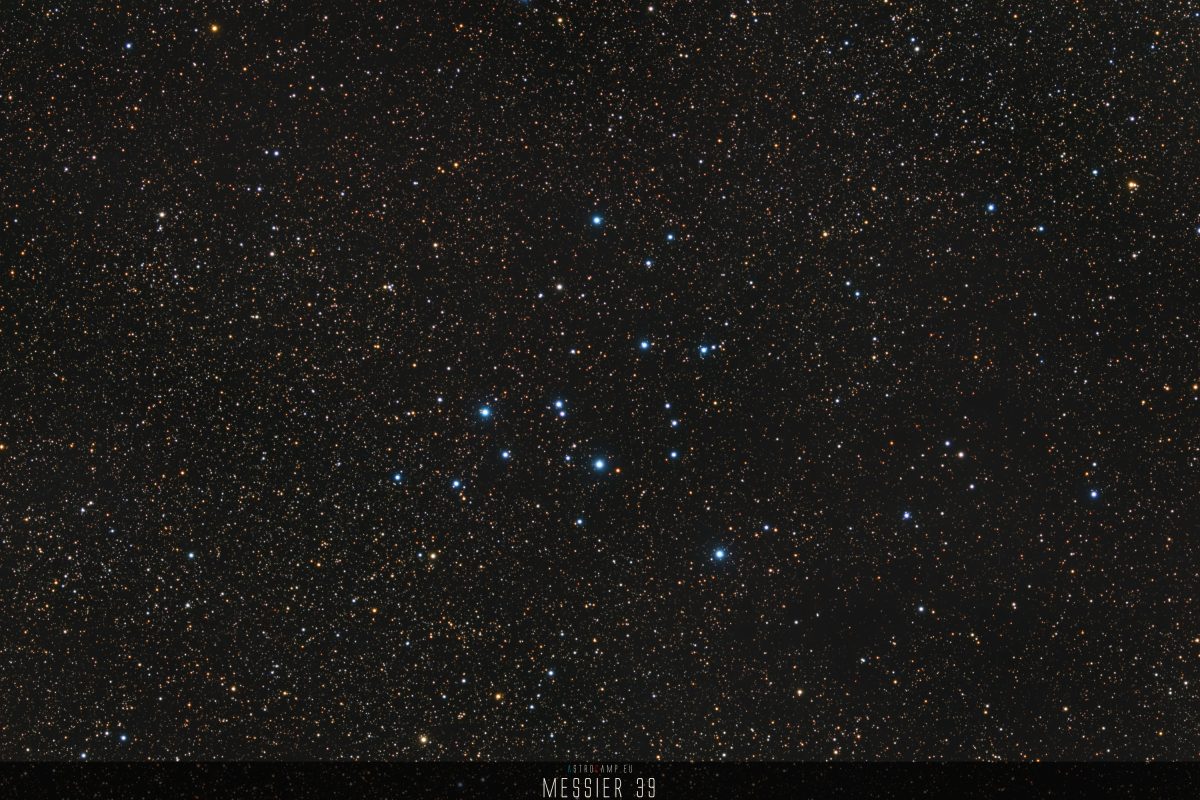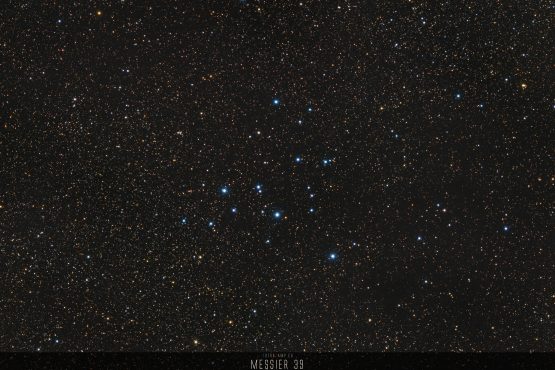Messier 39 is a relatively young open cluster, estimated to be around 250-300 million years old. It contains about 30 bright stars visible through small telescopes, with the brightest members being blue-white in color. The cluster has a distinctive triangular shape, earning it the nickname “Pyramid Cluster” among some astronomers. M39 is one of the nearest open clusters to Earth, making it an excellent target for amateur astrophotographers.
Names and Catalog numbers
- Messier 39
- NGC 7092
- Melotte 236
- Cr 438
Position and the cosmic neighborhood
Messier 39 is located in the northern part of Cygnus, about 9 degrees east-northeast of the bright star Deneb (Alpha Cygni). It lies in a rich star field of the Milky Way, making it a visually appealing target for wide-field astrophotography. The cluster is positioned near several other deep-sky objects, including the Cocoon Nebula (IC 5146) and the open cluster NGC 7082.
Nice to Know
- M39 was discovered by Guillaume Le Gentil in 1749, predating Charles Messier’s catalog entry by 15 years.
- The cluster is visible to the naked eye under dark sky conditions, appearing as a hazy patch of light.
- M39 contains several binary star systems and at least five chemically peculiar stars.
- The cluster’s stars are moving through space together, gradually dispersing over time due to gravitational interactions.
Brightness, distance and size
Messier 39 has an apparent magnitude of 4.6, making it one of the brighter Messier objects and visible to the naked eye under good conditions. It is located approximately 800 to 1,010 light-years away from Earth, with recent estimates favoring the farther end of this range. The cluster spans about 7 light-years in diameter, which translates to an apparent size of 29 arcminutes in the night sky – roughly equivalent to the size of the full Moon.



